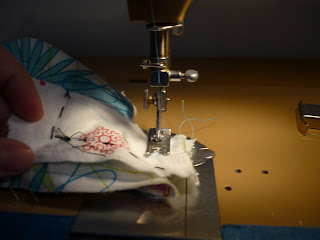
"You go ahead and take your money. We don't want your money. Just the bank's." - John Dillinger to a bank customer who accidently left his money at the bank counter during one of their stickups (p. 187)
Book:Public Enemies: America's Greatest Crime Wave and the Birth of the FBI, 1933-34
Author: Bryan Burrough
My review at-a-glance: Gunfights. Robberies. High-speed chases. Sprawling pursuits. And best of all: it actually happened.
The 1930s were a different time.
To this revelation you might have the following reaction: no duh. First off, there was this little thing the Great Depression. People were also overly fond of wearing fedoras. Computers didn't exist and $100 went a much longer way than it would now. But what isn't quite as well known are the stories of the "Public Enemies" during the 1930s and how their existence brought the FBI its power.
The cast of people involved in this complex web was nothing short of larger than life. In the forefront was John Dillinger, the charismatic "Robin Hood"-esque bank robber who managed to capture the public eye and, at least to some extent, the public's sympathy. Pretty Boy Floyd, another bank robber and an associate of Dillinger's, who was suspected of being involved in the Kansas City Massacre (of who's perpetrators remain officially "unknown.") Baby Face Nelson, the reckless, temperamental criminal who never thought twice of killing those whom he thought were in his way. Alvin Karpis, a member of the Barker-Karpis Gang and the "last man standing" amongst all his peers. And Bonnie and Clyde, whose romanticized Hollywood characterization deviates considerably from the true story behind their infamy.
In the early 1930s, the FBI was virtually unknown to the public and the onset of the Public Enemies' exploits pushed several members of this federal organization to the forefront. Burrough introduces us to them also, focusing on the roles of John Hoover, Melvin Purvis and Samuel Cowley. Little sympathy is reserved for Hoover, the first Director of the FBI, which is more than within reason if the characterization of him holds true. Additionally, Purvis' many blunders are detailed and Cowley's understated role in ending the "War On Crime" is reviewed.
Of course, the list doesn't end there. Many other "Public Enemies" fill out the real-life cast, as well as players on the FBI and various state police departments. Billie Frechette, Dillinger's girlfriend, and Ana Sage a.k.a. the "Lady In Red" are just two supporting characters important to the events that transpired. Burrough leaves no stone unturned in his investigation, which quenches one's desire for detail while making this a relatively long read - a trade off, perhaps - but a necessary one.
Personally, though I'm not a big fan of history and found it challenging to get all the characters and their paths straight at first, I found this book fascinating for the simple fact that all of this really happened. From the criminal masterminds involved and their escapades to the evolution of the FBI (which was much more tumultuous than you'd expect), it comes as no surprise to me that this was taken to be the stuff of a blockbuster movie - one which I fully intend to see (and especially look forward to watching the scene of an ingenious prison escape - for which I won't delve into, again at the risk of spoiling things). I shall end this long-winded review (I apologize!) with a Dillinger quote:
"I'm an expert in my business; I can play tag with the police any time."


















